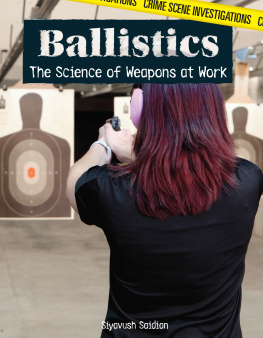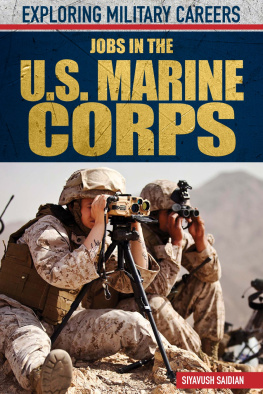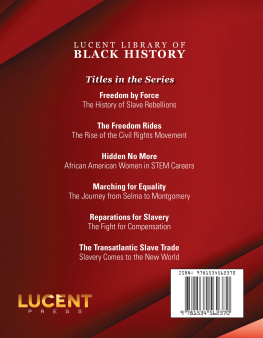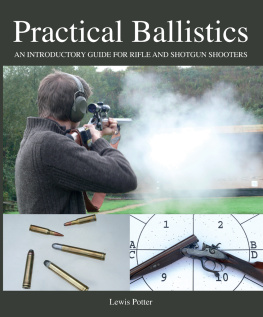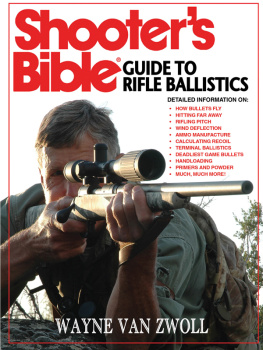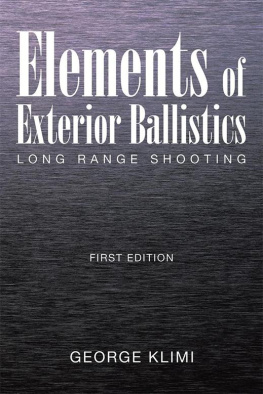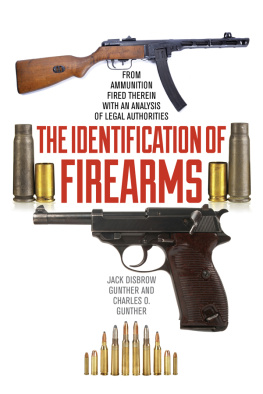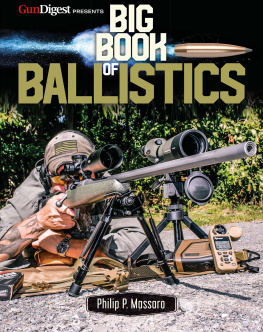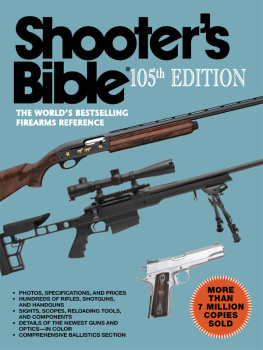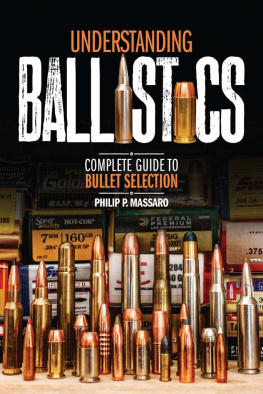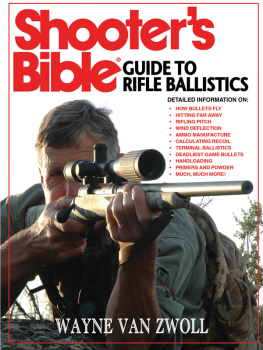- Introduction:
From Afar - Chapter One:
Tools of the Trade - Chapter Two:
What Remains - Chapter Three:
Watching It Go - Chapter Four:
The Aftermath - Chapter Five:
To the Courtroom
Published in 2018 by
Lucent Press, an Imprint of Greenhaven Publishing, LLC
353 3rd Avenue Suite 255
New York, NY 10010
Copyright 2018 Greenhaven Press, a part of Gale, Cengage Learning
Gale and Greenhaven Press are registered trademarks used herein under license.
All new materials copyright 2018 Lucent Press, an Imprint of Greenhaven Publishing, LLC.
All rights reserved. No part of this book may be reproduced in any form without permission in writing from the publisher, except by a reviewer.
Designer: Deanna Paternostro Editor: Siyavush Saidian
Library of Congress Cataloging-in-Publication Data
Names: Saidian, Siyavush, author.
Title: Ballistics : the science of weapons at work / Siyavush Saidian.
Description: First edition. | New York : Lucent Press, [2018] | Series: Crime scene investigations | Includes bibliographical references and index.
Identifiers: LCCN 2017031538| ISBN 9781534561717 (library bound book) | ISBN 9781534562707 (paperback)
Subjects: LCSH: Forensic ballistics.
Classification: LCC HV8077 .S28 2018 | DDC 363.25/62-dc23 LC record available at https://lccn.loc.gov/2017031538
Printed in the United States of America
CPSIA compliance information: Batch #CW18KL: For further information contact Greenhaven Publishing LLC, New York, New York at 1-844-317-7404.
Please visit our website, www.greenhavenpublishing.com . For a free color catalog of all our high-quality books, call toll free 1-844-317-7404 or fax 1-844-317-7405.
Contents
Introduction:
From Afar
Chapter One:
Tools of the Trade
Chapter Two:
What Remains
Chapter Three:
Watching It Go
Chapter Four:
The Aftermath
Chapter Five:
To the Courtroom
Foreword
F or decades, popular television programs and movies have depicted the life and work of police officers, detectives, and crime scene investigators. Many of these shows and films portray forensic scientists as the brains responsible for cracking cases and bringing criminals to justice. Undoubtedly, these crime scene analysts are an important part in the process of crime solving. With modern technology and advances in forensic analysis, these highly trained experts are a crucial component of law enforcement systems all across the world.
Police officers and detectives are also integral members of the law enforcement team. They are the ones who respond to 911 calls about crime, collect physical evidence, and use their high level of training to identify suspects and culprits. They work right alongside forensic investigators to figure out the mysteries behind why a crime is committed, and the entire team cooperates to gather enough evidence to convict someone in a court of law.
Ever since the first laws were recorded, crime scene investigation has been handled in roughly the same way. An authority is informed that a crime has been committed; someone looks around the crime scene and interviews potential witnesses; suspects are identified based on evidence and testimony; and, finally, someone is formally accused of committing a crime. This basic plan is generally effective, and criminals are often caught and brought to justice. Throughout history, however, certain limitations have sometimes prevented authorities from finding out who was responsible for a crime.
There are many reasons why a crime goes unsolved: Maybe a dead body was found too late, evidence was tampered with, or witnesses lied. Sometimes, even the greatest technology of the age is simply not good enough to process and analyze the evidence at a crime scene. In the United States during the 20th century, for example, the person responsible for the infamous Zodiac killings was never found, despite the earnest efforts of hundreds of policemen, detectives, and forensic analysts.
In modern times, science and technology are integral to the investigative process. From DNA analysis to high-definition surveillance video, it has become much more difficult to commit a crime and get away with it. Using advanced computers and immense databases, microscopic skin cells from a crime scene can be collected and then analyzed by a forensic scientist, leading detectives to the home of the culprit of a crime. Dozens of people work behind the scenes of criminal investigations to figure out the unique and complex elements of a crime. Although this process is still time-consuming and complicated, technology is constantly improving and adapting to the needs of police forces worldwide.
This series is designed to help young readers understand the systems in place to allow forensic professionals to do their jobs. Covering a wide range of topics, from the assassination of President John F. Kennedy to 21st-century cybercriminals, these titles describe in detail the ways in which technology and criminal investigations have evolved over more than 50 years. They cite eyewitnesses and experts in order to give a detailed and nuanced picture of the difficult task of rooting out criminals. Although television shows and movies add drama to the crime scene investigation process, these real-life stories have enough drama on their own. This series sticks to the facts surrounding some of the highest-profile criminal cases of the modern era and the people who work to solve them and other crimes every day.

O n October 2, 2002, a lone round of .223-caliber ammunition was sent down the barrel of a Bushmaster XM-15 rifle. At a speed of roughly 3,200 feet (975 m) per second nearly 3 times the speed of sound the bullet ripped into its target: a man walking to his car in a parking lot in Wheaton, Maryland. James D. Martin, 55, felt an enormous impact, throwing him to the ground. He did not die instantly, however, despite a tear in his spinal column and a wound to his heart; paramedics hurriedly arrived at the scene, but he could not be saved before dying due to extreme blood loss. The man who fired this shot looked on at the scene as his driver sped away in a blue Chevrolet Caprice. Terror took hold of the community in and around Washington, D.C., where a series of similar attacks occurred over the course of the next month. Puzzled and angry, law enforcement agencies around the area turned to ballistic forensics, or the study of firearms and projectiles, to help protect their citizens and finally catch up to the murderer.

Shown here is a gun similar to the one used by the people sometimes called the D.C. Snipers during their three-week-long rampage.
Wrong Place, Wrong Time
On October 3, just one day after James D. Martins shooting, five more people were each gunned down by a single shot. Early that morning, James Buchanan was shot while mowing the lawn in front of a car dealership in Maryland. Less than an hour later, still in Maryland, Premkumar Walekar, a taxi driver, stopped to fill his tank. A loud crack filled the air, and Walekar staggered for help before collapsing near the pumps. A devoted father, Walekar always encouraged his daughter, Andrea, to do well in school and finish college, an opportunity that he could never take advantage of. The snipers bullet ended his dream of watching her graduate.

